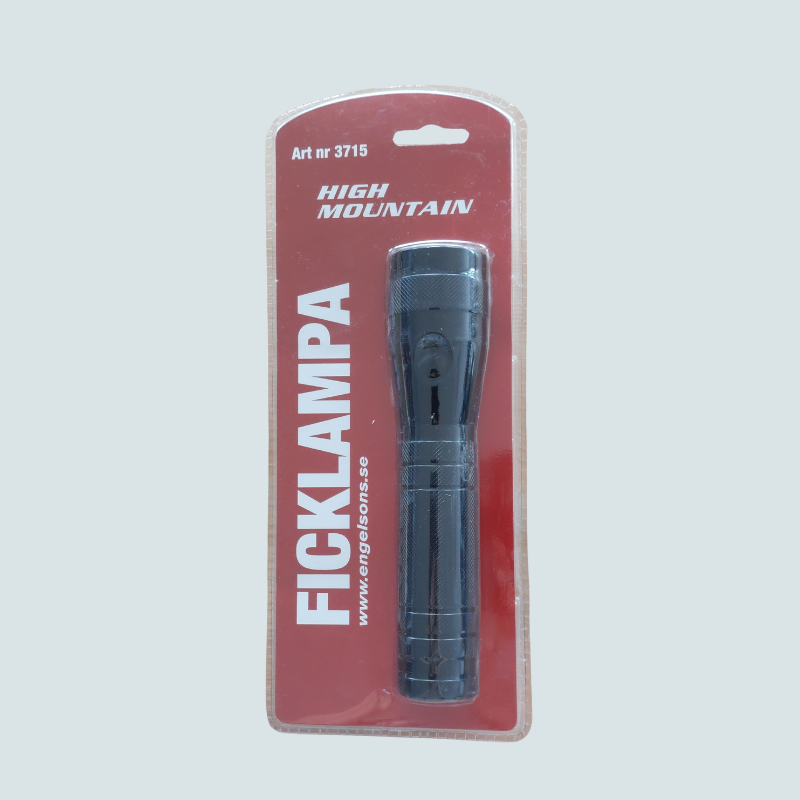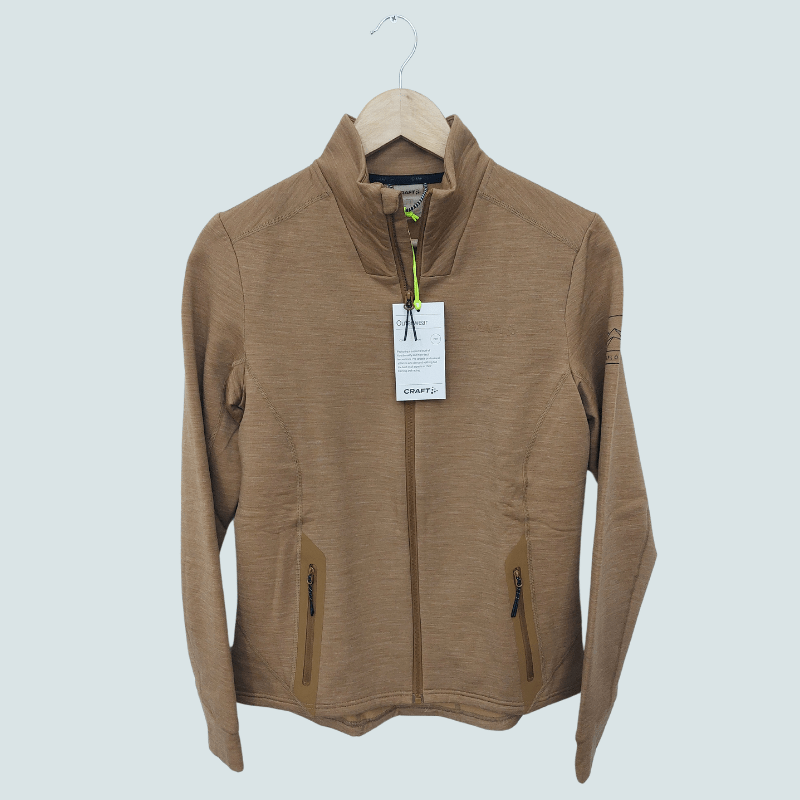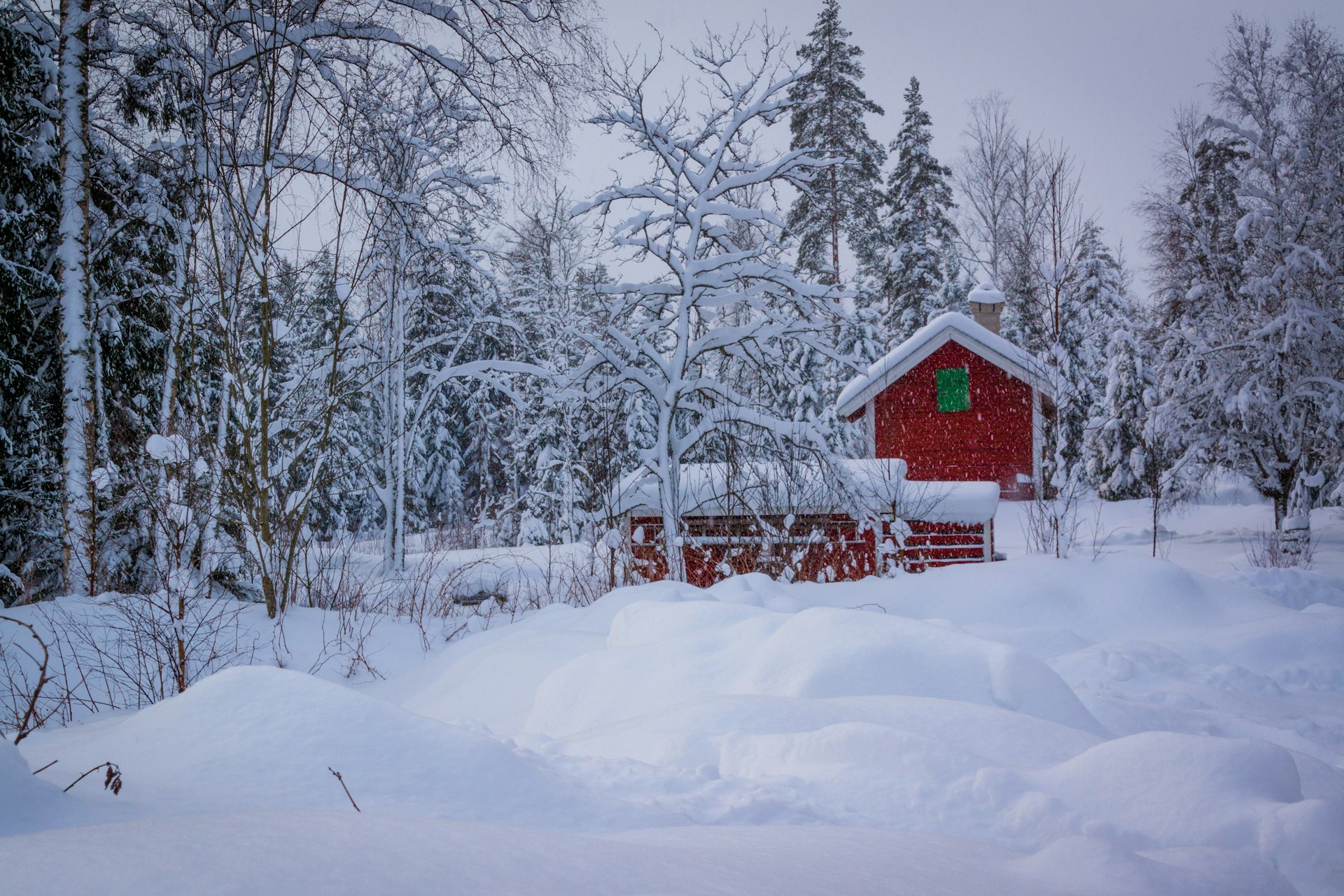Closing up your summer cottage for a harsh winter ahead.
If you look outside now, the autumn winds are blowing, trees are shedding a waterfall of yellow, brown and red leaves on to a ground that is being watched over by a grey sky. And as you watch the birds migrating south – you know winter is fast approaching and if you haven’t started already now is the time to make sure your cottage is protected from the elements and ready for you to enjoy next spring and summer.
From securing utilities to checking for potential pest entry points, we have written below what we feel are the some of the steps you can take to keep your cottage safe and sound through the colder months. Keep in mind also during the first half of 2024, the number of reported frost damages to Folksam (the insurance company) increased by a whole 132 percent, compared to the same period last year.
Protect your plumbing.
In order to prevent having to deal with the aftermath of frozen pipes, if your pipes are not well insulated in exposed places, such as in the basement or outdoors you’ll need to drain the water from your plumbing system. And don’t forget any hoses if you have them connected to an outside tap or sprinkler systems, remember to store them inside to prevent cracking and deterioration from the cold.
Shut off the main water supply and open taps to allow any residual water to flow out, including sinks, bathtubs, and showers. Also, flush all toilets to empty the water from the system. If you are really in an area of freezing temperatures for an extra layer of protection, pour a small amount of T-Röd or antifreeze in the drains and toilet before leaving to prevent damage to any of the plumbing and to stop any nasty smells wafting up.
If you are ready to foot a heftier electricity bill you could also leave some heating elements set to low in the house to keep the temperature a bit higher during the winter as well. Or maybe you have the ability to remotely turn the heating up when it needs to deal with dropping temperatures.
A major issue here is ventilation, you don’t want an unheated house with no airflow, that’s a great way to develop mould issues.



Checking the insurance policy.
A good place to start is to check your insurance policy to make sure it provides adequate protection and covers all possible winter hazards.
Avoid vampires 🙂
Disconnect appliances to protect them from potential power surges and vampire power, electricity that is being used by appliances left either on standby, or that aren’t being used at all but are still drawing small amounts of electricity.
Ensure smoke and if you have them carbon monoxide detectors have new batteries, as cold can drain batteries faster than usual.
Clean out perishable items.
Clear out any perishable food from your fridge and pantry to avoid unpleasant odours and pest attraction. Leave the refrigerator door ajar to allow air circulation and prevent mildew from forming inside. For a fresh-smelling fridge, leave a small open box of baking soda inside.
Clothing and bedding.
Remove all clothes and bedding from your holiday home or store them in airtight containers to protect them from moisture and pests.
Check and secure windows and doors.
Give all windows and doors a thorough inspection to ensure they’re tightly closed and properly sealed to keep moisture, pests, and intruders at bay. Consider investing in draft stoppers or weatherstripping around door frames for added protection. And for sliding doors, a dowel in the track can prevent break-ins.



Protect against pests.
Cover any open vents, chimney tops, or tiny gaps in walls with wire mesh to keep out rodents and birds. Remove anything that might tempt animals, such as pet food and put rodent repellents or traps in key areas.
For a natural solution, sprinkle a little peppermint oil around entry points as a deterrent. When used around entry points in the home and applied via sachets near doors and windows or diffuser or spray, it can help repel ticks, spiders, roaches, moths, flies, fleas, beetles and ants.
Ventilation and mould.
Ventilate the house regularly to prevent condensation and mould formation. Also ensure that moisture has no chance to accumulate in closed rooms.
Another good idea is to move furniture away from the outer walls to prevent mould formation and cover the furniture with a cover to protect them from dust and dirt.
Inspect and secure the roof and gutters.
Before closing up, check the roof for any damaged shingles or tiles and clear the gutters of leaves and debris to allow for proper water drainage. This helps to prevent water pooling and ice buildup during the winter, which could cause leaks and structural damage.
And if you can, remove any grass or moss that is growing on the roof – when this freezes during the winter it can splinter a tile or begin to dislodge them.
Buy Better Quality For Less
Different items arriving daily. New & Unused, and Second hand.
Lock up valuables and important documents.
To safeguard your belongings take any valuable items with you and if you have one, consider installing a small security camera or motion-detecting lights outside. If you have a WiFi set-up you may be able to connect a camera to check things out through your phone app.
Don’t forget to store garden furniture and garden tools in a protected space, you don’t want them blowing away or being stolen or if you can’t put them inside make sure you cover them to protect them from the weather.
Ask a neighbour to check.
If your new to owning a holiday home make sure you make friends with your neighbours, whether they like you only come for the summer or are permanent residents.
If they live in the area year round, build a relationship before you ask them to check in on your cabin while you are away or in case of a winter storm or other severe weather. Typically, a gift is more appropriate than payment if you want to give them something, unless something really needs to be fixed. Best, of course, is if you can help the neighbour out when you are there.



Protecting against unwanted visitors.
In addition to addressing immediate safety concerns, it’s also important to take steps to protect your cottage from potential threats such as theft or vandalism. It is always a good idea to install a robust, secure lock on doors and windows. Just the fact that you have good locks can often be enough to put off a wanna be burglar.
If you have neither a computer nor internet/cellular service at your cottage, another surveillance option to consider is a motion-activated trail camera. Trail cameras take digital photos and sometimes videos of movement, storing the images to a memory card inside the box. Most also include no-flash, infrared technology for capturing images in the dark.
Routine maintenance tasks.
Finally, don’t forget to make a “to-do-list” of maintenance tasks to keep your cottage in top condition. From regular inspections to periodic repairs, staying on top of maintenance will ensure that your summer retreat remains a safe, comfortable, and enjoyable haven for years to come. You won’t be able to do these jobs in the winter but it is good to start planning for those tasks you just ran out of time on to complete.
Perform a Final Walkthrough.
As a last step, take a few moments to walk through your cottage, cabin, hideout and make sure everything is in order. Check that lights are off, windows are locked, and any possible hazards are addressed and wave goodbye and wipe that tear from you eye because it won’t be that long before you are back complaining about those mosquitos.
See more of the outdoor brands we have to offer. Catch up with our Resources page to plan your next adventure.
Subscribe and get 10% off today.
Get the latest news, new product arrivals and discounts straight into your inbox.
Subscribe & Get A 10% Discount.
Don’t miss out on news, the latest new products and special time limited offers 🙂

